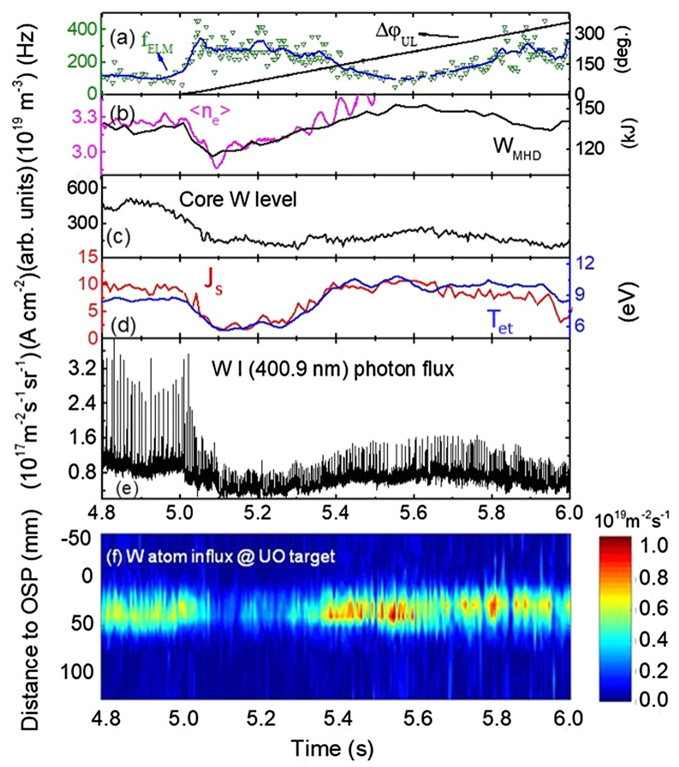
The high confinement regime (H-mode) in the tokamak has been accompanied by a MHD (magnetohydrodynamic) instability labeled edge-localized-modes (ELMs).
Present researches on ELM control mostly aims at reducing the heat or particle flux. Nevertheless it is not yet clear about the W sputtering process by the ELM heat and particle flux as well as the effects of ELM control on W sputtering erosion. That will bring an uncertainty to both the control of W impurity source and the evaluation on the divertor lifetime.
Recently, a research team led by Dr. DING Fang from the Institute of Plasma Physics, Hefei Institute of Physical Science (HFIPS) successfully distinguished and quantified the ELM-resolved W sputtering process by employing the spectroscopy diagnostic on EAST.
They investigated in detail the W sputtering processes in the EAST W divertor in terms of both time characteristic and intensity evolution. As a result, they made a clarification on the basic mechanism and the key influencing factors for the intra-ELM W sputtering, and unveiled the difference between W sputtering and heat deposition processes on the divertor targets during ELM bursts.
They took a further systematic comparison of the W erosion control among three ELM mitigation means, namely, natural ELM, RMP (resonant magnetic perturbation) and LHW (lower hybrid wave).
The research revealed that pedestal plasma condition and the transport processes in SOL region during ELM bursts are responsible for the different control effects. Besides, the experiments on EAST showed that ELM control process inevitably influences the condition of plasma in the divertor. It is observed that the strong ELM mitigation by RMP is also accompanied by partial detachment at the divertor target plate, suppressing the W erosion in-between ELMs.
These findings not only contribute to the control of the W impurity source during H-mode operation on EAST, but also provide a reference for the optimization of ELM control on ITER as well as the nest-step fusion facilities. The Nuclear Fusion referees gave the comments on this work with “an interesting and original ITER-relevant study” and “will be of interest to the wide fusion community”.
Link to the paper: The impact of ELM mitigation on tungsten source in the EAST divertor

The variation of W sputtering on the upper outer divertor target with phase difference ΔφUL under n=1 RMP field in EAST (Image by CHEN Xiahua)
Contact:
ZHAO Weiwei
Hefei Institutes of Physical Science (http://english.hf.cas.cn/)
Email: annyzhao@ipp.ac.cn